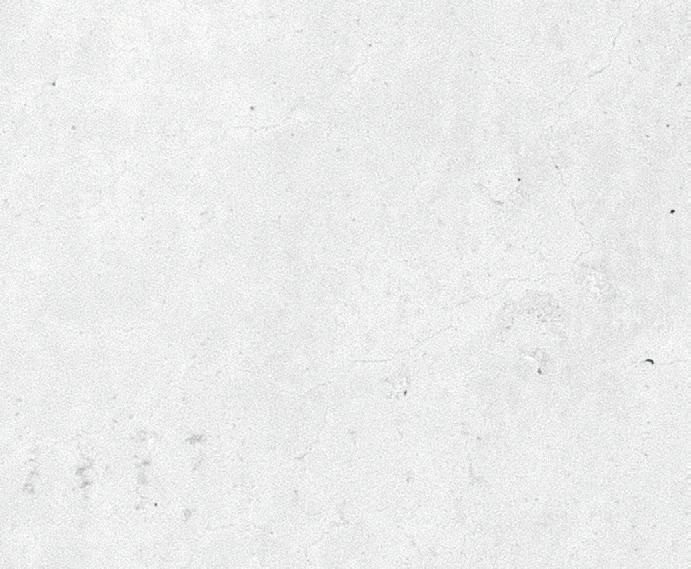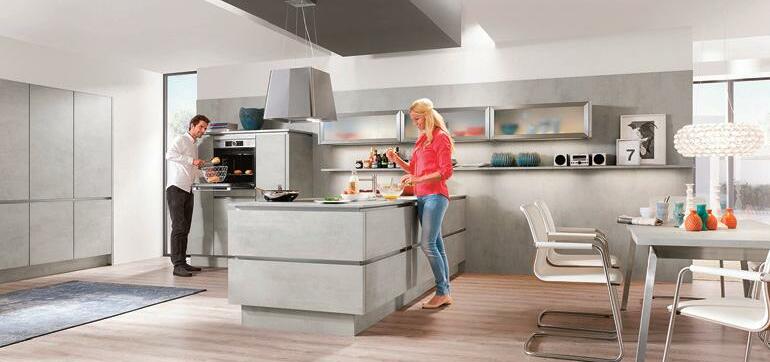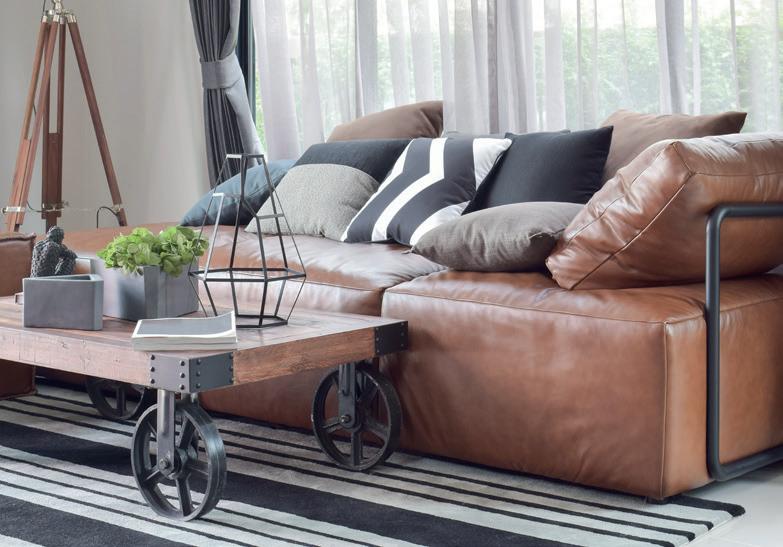
8 minute read
In The Garden
prize for children to find) - these were the so called “copper” coins ; and then there was the Sixpence (a “tanner”), the Shilling (a “bob”), the Florin (2 shillings), the Half Crown (2/6d) because there had earlier been the Crown (of value 5/=). These latter coins were called “silver” but there was also a gold coin called a Guinea (of value £1 - 1S or 21/=, which is still found as tender in horse racing and other stock market auctions). Then there were the paper “notes” the first being for 10/- followed by the £1 and finally (so far as “ordinary” people were concerned) the £5 note (known affectionately as a “white fiver” and which was very rare in our limited world).
Decimalisation took place in 1971 and was a terrible shock to many people at the time. It’s true to say that it took a lot of older people a very long time to get used to the new way of judging the value or the cost of something (some folk never managed it at all). The previous system (above) was scrapped in favour of a decimalised system and, as a consequence, the values relative to a name (which might still be kept) changed considerably. It was decided to keep the pound (it was debated whether to call it the “Royal”) but that it should now consist of 100 “new pence” which meant that 1p (note p not d) equalled the previous 2.4 d. The former sixpence stayed for a little while and was worth 2.5p but the 1p is virtually extinct now. Also the old shilling became the new 5p ; the old florin became the new 10p ; a new 20p coin was the equivalent of the former 4/- ; the old 10/- note became the new 50p coin and the old £1 note became the new “pound coin”. The £5 note now became the lowest denomination paper money and £10, £20 and £50 notes were introduced as monetary values lessened as wages soared. There’s no wonder that many older folk (who don’t like change at the best of times) were very unhappy - and found life extremely confusing. It was also noticeable that many businesses took advantage of the repricing of commodities after decimalisation such that the cost of everything went up (never down) in real terms. I know I shall be accused of “living in the past” but I can recall when the stamp for a letter was tuppence ha’penny in old money (ie 21/2d, ie 1p). Now a standard second class letter costs 68p - a 6700% increase. Have wages risen by 6700%, I wonder? (and what about the shilling loaf of bread - now a couple of quid?). It’s called progress, I suppose.
Advertisement
The metric system
The beauty of the metric system is its simplicity (providing you learn the language). Everything is based on the number 10 so we get 10 somethings equals something else, and then 10 of these something elses equals yet another something. For each system, there is a basic unit such as for length it’s the Metre, for weight it’s the Gram and for liquid measure it’s the Litre. Then there are sub- and super- divisions of these basics which are consistent and take the range : One thousandth part is milli ; one hundredth part is centi ; one tenth part is deci ; 10 times more is Deka ; 100 times more is Hecto ; and 1000 times more is Kilo. NB the sub units have lower case letters, the super units have upper case. So for length, we have 1000 millimetres (mms) = 1 metre, or 100 centimetres (cms) = 1 metre, or 10 decimetres (dms) = 1 metre. It follows that 10 mms = 1 cm, that 10 cms = 1 dm, and that there are a million mms in 1 Km. For larger than 1 metre lengths, we have 10 metres (ms) = 1 Dekametre (Dm) ; and 10 Dms = 1 Hectometre (Hm) and 10 Hms = 1 Kilometre (Km). The prefices milli, centi, deci, Deka, Hecto, Kilo can be used with any basic unit eg we understand that 5cL of liquid means 5 hundredths of a litre; that 5 Kg of something means that it weighs 5000 grams of that substance. Outside the range milli to Kilo, units tend to move in groups of 1000 times and we meet Mega (a million or 106 times) ; Giga (the American billion or 109 times) ; Tera (the British billion, ie a million million or 1012 times) ; Peta ( 1015 times). Lesser measures move in groups of one thousandth part and below milli there is micro, then nano, pico and femto. Admittedly, with the Metric System you’ve got to learn some new prefixes and suffices but - surely, you must confess - the overall sysytem is simpler than trying to remember how many oxen are needed to plough a field 14 chains in length and occupying 7 virgates of area!
Home & Garden Industry Expert

Simple, stunning and easy to achieve, industrial-inspired interiors are a fantastic way to modernise a space in a unique and impressive way.
Old factories and warehouses are rarely associated with style and glamour, but as the industrial-style trend proves, décor inspired by these buildings can be both timeless and effortlessly modern. The combination of exposed brickwork, oversized metal light fi ttings and elements of natural wood, create the kind of space that is expansive, but also warm and welcoming.
This is often thanks to the open plan design, a look that comes from the presence of trendy lofts and characterful workshops in industrial spaces that have been converted to homes.

However, you don’t have to live in an old shoe factory to achieve this look, as adding just a few elements can really transform a space, large or small.
A fi ve-step guide to pulling off the industrial look 1. Colour palette
Consider your colour palette, carefully. You’ll probably want to go with something neutral, but not white.
The best look will take in something earthy - a natural colour scheme that features plenty of browns, tans and greys.

2. Brick brilliance
If you’re lucky enough to have exposed brickwork, make this the centrepiece. While brick interiors will give off an air of crumbling majesty, you can seal in the wall, so you aren’t always sweeping up debris.
What people admire most about brickwork is the colour and the pattern, but don’t be afraid to use an exposed brick wall as a base for pictures, mirrors and art.

3. Furniture without fi nesse
When selecting furniture, go for raw materials - the more rugged the better. A large dining





table, for example, made from reclaimed wood; armchairs upholstered in buttery tanned leather; stainless steel cabinets and antique hanging lighting features with Edison bulbs that bathe the space in a warm, golden glow.
So while you don’t need to actually live in an old factory to obtain this look, were you to chance upon some chairs or light fi ttings recently expelled from one, they would be a valuable contribution to your aesthetic.
4. Veer towards vintage
The scattering of vintage items will always bring a unique aesthetic to an industrial space, and you don’t necessarily have to splash the cash to achieve the look.
Sometimes, if looking to create a room that feels truly unique, items can be procured from dusty lofts, modest antique shops or even online.
The best thing is these pieces don’t need to be preened or polished - the industrial style, by its very name, requires pieces to have history and a certain amount of wear and tear.
5. Flawless fl oors
Finally, the fl oor. The immediate thought for an industrial-look underfoot is to go with sheer concrete or wooden fl oorboards, but in recent years there has been more of an ‘anything goes’ approach taken, to the point where a woven carpet is acceptable.
In addition, the placement of a fl uffy rug can really set off a space and helps when dividing a larger living area into specifi c zones.




Showroom: leighton Buzzard Garden Centre, Hockliffe Road LU7 9NX
Tel: 01525-851830 E: sales@kinteriorsltd.co.uk www.kinteriorskitchens.co.uk "We sell it, we fit it, we clean it"


Samples delivered to your home We move and replace furniture We remove all waste Your local carpet and upholstery cleaning service
All furniture moved and replaced Stain & odour removal Stain shield | Protective treatments
01525 862744 or 07999 909982 07999 909982 www.thevinedirectory.co.uk thecarpetman1@virginmedia.com 01525 862744 or 07999 909982thecarpetman1@virginmedia.com All furniture moved and replaced Stain & odour removal Stain shield | Protective treatments 01525 862744 or 07999 909982thecarpetman1@virginmedia.com Full range of new carpets & flooring supplied and fittedSamples delivered to your homeWe move and replace furnitureWe remove all wasteYour local carpet and upholstery cleaning service All furniture moved and replaced Stain & odour removal Stain shield | Protective treatments "We sell it, we fit it, we clean it"Full range of new carpets & flooring supplied and fittedSamples delivered to your homeWe move and replace furniture "We sell it, we fit it, we clean it"Full range of new carpets & flooring supplied and fittedSamples delivered to your homeWe move and replace furnitureYour local carpet and upholstery cleaning service All furniture moved and replaced Stain & odour removal Stain shield | Protective treatments thecarpetman1@me.com 31Your local carpet and upholstery cleaning service "We sell it, we fit it, we clean it"









